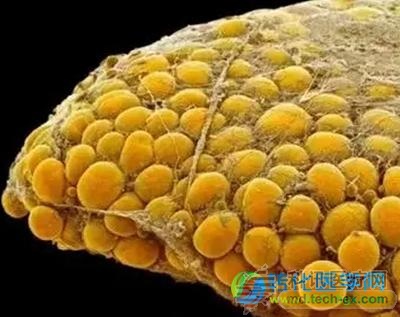Release date: 2017-04-24

Recently, a group of researchers from the Center for Cell Biology and Tissue Engineering at the University of Applied Sciences in Zurich, Switzerland, said they found that two receptors on the surface of brown adipose tissue can serve as potential therapeutic targets for these cell surface receptors. Targeting can promote the metabolism and transformation of brown adipose tissue (BAT) ("good" fat).
These two cell surface receptors, called TRPM8 and TRPP3, are closely related to the production of brown adipose tissue in the human body. At the same time, such cell surface receptors may also be activated by natural molecules or artificial molecular compounds in certain foods, increasing the synthesis and metabolism of brown fat in humans. This study has great implications for the treatment of obesity, diabetes and related metabolic disorders.
Dr. Michael Raghunath, Ph.D., of the University of Applied Sciences in Zurich, said: "Our study identified the potential of TRPM8 and TRPP3 receptors as targets for human brown lipogenic drugs. Based on this study, we can develop regulated individuals. Energy-consuming specific targeted drugs to achieve precise regulation of blood sugar and lipid metabolism."
“In the face of diabetes and obesity, which are expanding year by year, our work helps to develop the development of brown fat non-adrenergic stimuli, guiding diabetes and obesity patients to affect the anabolism of brown fat through functional foods, thereby alleviating and Long-term control of their condition."
The corresponding article in this study is published in the latest online FASEB magazine entitled "TRP Channels in Brown and White Adipogenesis from Human Progenitors: New Therapeutic Targets and the Caveats Associated with the Common Antibiotic, Streptomycin". In this article, Dr. Raghunath and his colleagues conducted in-depth research on two precursor cell types from the human body: bone marrow stem cells (MSC) and subcutaneous abdominal fat cells. Undifferentiated cells were cultured in control cultures by inducing differentiation of these cells into white or brown fat cells.
During the experiment, the researchers analyzed all 27 transient receptor potential (TRP) channels in white and brown adipocytes. Some TRPs were observed to be never expressed during adipocyte differentiation and growth, while other TRPs were constantly expressed, and some specific TRPs only appeared during brown fat cell differentiation.
TRPM8 and TRPP3 are present at high levels in brown adipocyte differentiation but not in stem cells prior to differentiation of these cells. To investigate the specific role of TRPM8, the researchers used specific promoters or inhibitors to demonstrate that when the TRPM8 receptor is strongly stimulated, it can turn white fat into a gray fat that is beneficial to the body. The elimination of TRPP3 function through genetic manipulation can inhibit the formation of brown fat and make the body synthesize a large amount of white fat.
Dr. Thoru Pederson, editor-in-chief of FASEB magazine, commented: “Only when people begin to recognize the intrinsic mechanism of brown fat synthesis and metabolism, people can better use it. Further research will link this phenomenon to people's dietary preferences. Together, helping millions of obese and diabetics around the world live a healthier life."
Source: Translational Medicine Network
Office Fingerprint Safe,Digital Fingerprint Safe,Fingerprint Biometric Safe Box,Electronic Biometric Fingerprint Lock
Ningbo Reliance Security Technology CO.,Ltd , https://www.reliancesafes.com